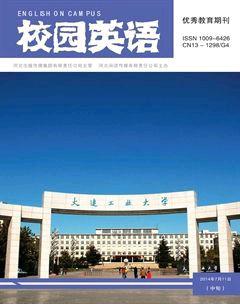The Research on Turn-taking Mechanism in Northeast song-and-dance duets
鞏艷博+李培培
【Abstract】Turn-taking is understood as a realization of the actors' and the actresses' adaptation to their own conversational circumstance----the audience's social world and mental world, to achieve the goal of the performance. The core of this study is the formulation of an adaptation model of turn-taking and a detailed analysis of the influence of conversational circumstance on turn-taking in northeast song-and-dance duets.
【Key Words】turn-taking; adaptation; northeast song-and-dance duets;
1. Introduction
The northeast song-and-dance duet, as one of the audience's favorite programs, has a history of over 200 years in the northeast three provinces of China. The earliest historical records on northeast song-and-dance duets can be traced back to the period of the reign of Emperor Kangxi of Qing Dynasty, while Heishan county of Liaoning province is the cradle of it.
This present study will serve as an exploration of the rules and features of turn-taking strategies formulated by Sacks et al. (1974) in the analysis of northeast song-and-dance duets. In this way, this study will not only testify the relevant rules but also contribute to the further development of them. Turn-taking has attracted attention of many linguists. Sacks et al. (1974) studies turn-taking in everyday conversation. It is such a program that is performed by an actor and an actress to speak, sing, dance, and enact their unrivalled skill for live audiences and those watching the program through television and VCD.
2. Turn-taking Mechanism
The concept of turn has been put forward by Sacks. (1974) But they havenot offered a clear definition about it. Many linguists and researchers both at home and abroad have been attempting to come up with an exact definition, but their explanations always raise problems: Harris (1951) defines the turn as "a stretch of talk, by after which there is silence on the part of that person. In this group are studies by Jaffe and Feldstein (1970] and Duncan and Fiske (1985), because for them the turn merely consists of talk with an end boundary Turns are attributed to a single speaker and are defined in terms of the behavior of other parties in the conversation (a turn ends when somebody else claims the floor).
In order to facilitate our study on song-and-dance duets, the turn in the present any participant in the conversation can claim the floor. In the present study, we will take these elements into account, such as body languages, gaze direction or paralinguistic signals. Study refers to: 1) the grant of power to speak by the former speaker to the current speaker and the current speaker's responsibility to speak; 2) the stretch of talk uttered by a speaker at one period of time during the process of the conversation; 3) body languages and feedbacks employed by parties of conversation in the middle of conversation; 4) the beginning and ending of the stretch of talk marked with the exchanging role of the current speaker and the next speaker.
endprint
3. Studies on Northeast song-and-dance duets
Northeast song-and-dance duet is bothuniqueandcomplexwiththe characteristics of drama, song and dance. However, because it had never obtained the acknowledgement of feudal intellectuals, it was deemed that few records appeared in the historical texts, so until now there has been the dispute about its definition and origin. Ci Hai Dictionary of Chinese (2000) describes that "song-and-dance duet, a kind of quyi. Sun Hongxia and Liu Wenfeng (2006) suggest thatnortheast song-and-dance duet originates from talking and singing art----Lianhualao and Shanxi liu-tune spread to northeast of China, which gradually exchange and incorporate into the northeast folklore, and lately formnortheast song-and-dance duet with the strong regional flavor.
In fact, we must lay particular emphasis on the cultural inheritance and the influence of talking and singing art from Central Plains to northeast song-and-dance duet as resolving problems of the historical development of art. In addition, even if northeast song-and-dance duet is not one-origin art, we also can not arbitrarily categorize it and regard the integration of a range of northeast folk art as its origin.
References:
[1]Allwright, R. (1980). Turns, topics and tasks: Patterns of participation in language learning and teaching. In D. Larsen-Freeman (Ed.), Discourse second research (pp. I65-187). Cambridge, M.A.: Newbury House.
[2]Atkinson, J. M.,&Drew, P. (1979). Order in court: The organization of verbal interaction in judicial settings. London: Macmillan.
[3]Bales, R. R(1950). processanalysis:A method for the study of small groups. Massachusetts: Addison Wesley.
endprint

